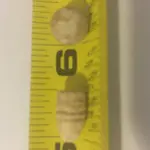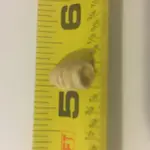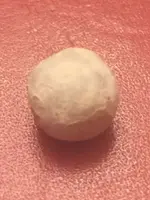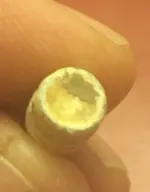The lead ball with thick white lead-oxide patina on it appears to be a .44-caliber pistol ball, statistically most like to be for a .44 Colt Revolver. As such it would date from the mid-1840s to the early 1870s, when metallic-cartridge ammunition almost entirely replaced the old cap-&-ball ammo.
The other bullet also has thick white lead-oxide patina, indicating it is made of 100% lead instead of the more-modern recipe of lead alloys. Laying on the tape-measure doesn't give us the precise diameter measurement we need, but it looks to be a bit larger than .25-inch... perhaps a .30 or .32-caliber. The photo is too out-of-focus for specific identification of what "brand" of bullet it is, but the crimp-mark of a metallic-cartridge can be seen... so it's not a cap-&-ball bullet. We can also see it has a wide but shallow bowl-shaped recess in its base, which means it is from sometime later than the civil war. Could be latter-1800s through first half of the 20th Century.
 Thanks
Thanks Thanks
Thanks







